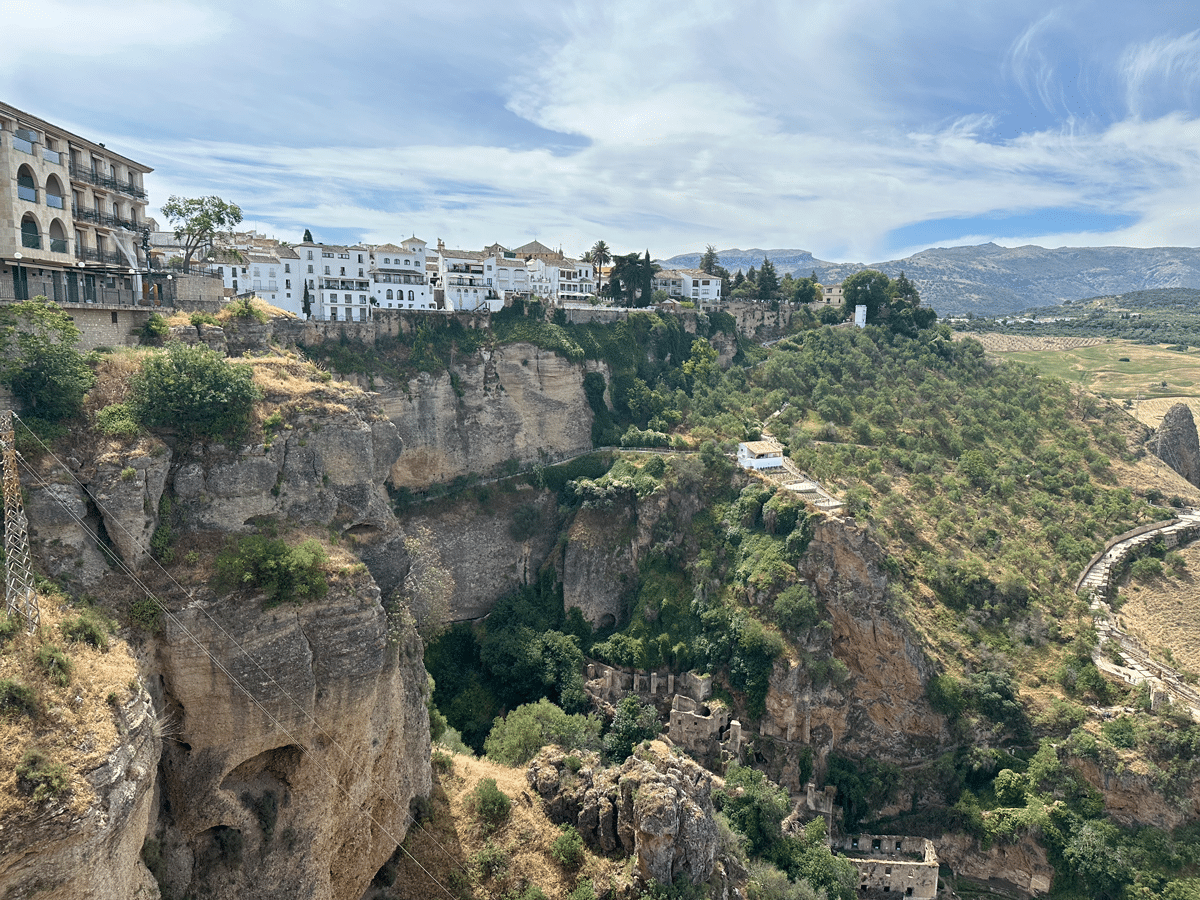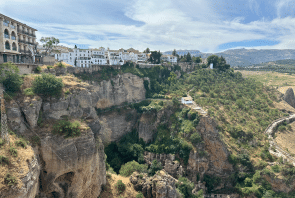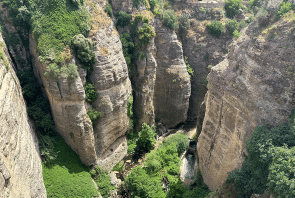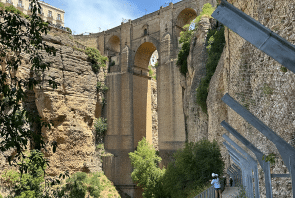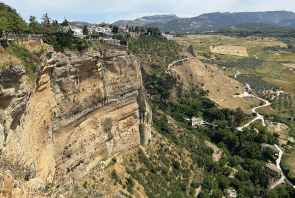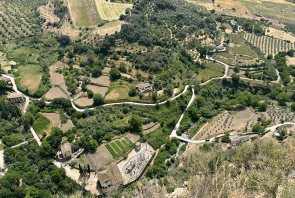Travelers to Spain who discover their love for Andalusia often explore Seville, Granada, Malaga or Cordoba, the most beautiful cities in Andalusia. Ronda, not far from the Costa del Sol, is also a popular destination for Andalusian holidaymakers. You can reach it with a rental car due to the lack of an airfield.
The location of the city on two rocky plateaus is unique. However, the hard-to-reach city complex offered strategic advantages. The Tagus Gorge, which lies between the plateaus, reaches 120 meters deep. It divides Ronda into two halves. Both districts are connected by three bridges.
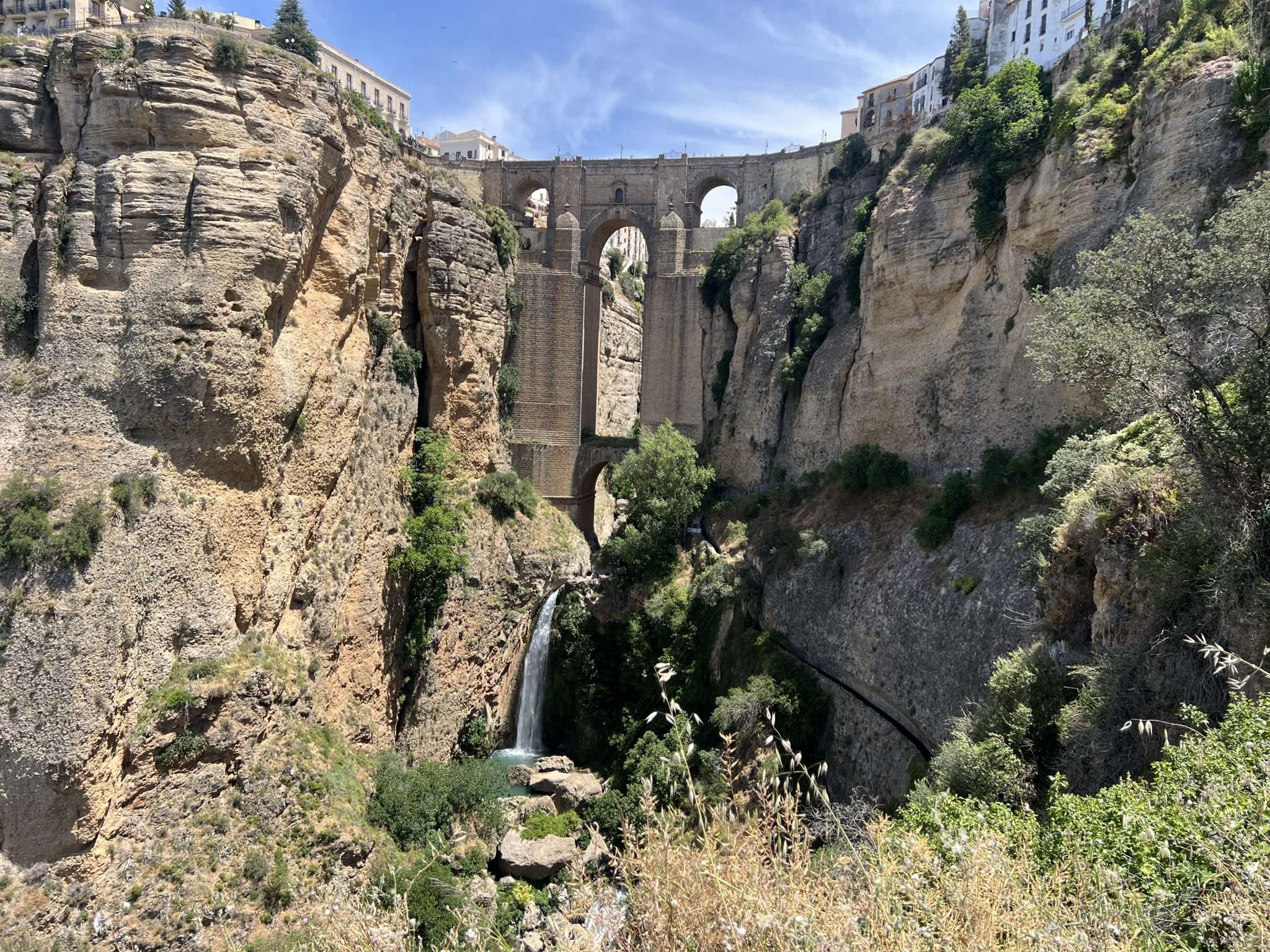
The history of Ronda
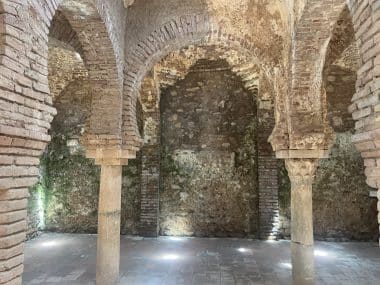
Paleolithic cave paintings near Ronda suggest that people settled here early on. But it was not until Roman times that the first records of the city were found. Ronda was still called Arunda by the Celts who settled here. They were followed by the Phoenicians and the Sweben.
The citizens of the city felt safe because of the favorable strategic location – at least until the first of many plundering in 429 AD. The history of Ronda proves that even the location high up on a plateau could not protect the citizens of the city from further conquest or plunder. The Vandals were followed in 713 AD by the Moors, and later by the Catholic kings.
It was not until 1485 that the Christians reconquered the city. Ronda’s Moorish heritage is still recognizable despite all efforts to eliminate it from the cityscape. Above all, the publicly accessible Casa del Gigante from the 13th century offers insights into the Moorish architectural style. Many formerly existing mosques and minarets have been razed or converted into churches.
The plateau opposite the town centre was developed into a new district. In the 18th century, the first of three bridges was built, which still connect the two districts today. At the same time, the construction of a bullring ensured that Ronda is now considered the cradle of bullfighting. The 40,000 inhabitants of Ronda are proud to live in one of the most beautiful cities in Andalusia.
What to see in Ronda
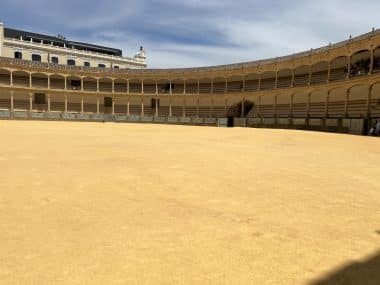
Many Andalusia fans only visit Ronda as day tourists. However, it is worth staying a few days and also exploring the magnificent surroundings. The traces of the Moorish occupation of Ronda were not completely removed. Fortunately, because the historic old town with the palace of the Moorish king from the 14th century, which is well worth seeing, is worth a stroll.
Spectacular panoramas and photo opportunities are offered by the three bridges over the Tagus Gorge, which connect the two districts of Ronda. No wonder that numerous smartphone cameras are held up here. The Ponte Nuevo, built in 1793, offers the most populated viewpoint every summer. The sister bridges Puente Viejo and Puente Árabe are older.
The Puente Árabe is sometimes referred to as Puente Romano because of its foundations from Roman times. The Arabs later took over the further construction. These bridges also offer attractive viewing angles. A very popular photo motif is also the old city gate, Puerta de Almocábar. Equally photogenic is the Iglesia de Santa Maria la Mayor.
Visitors to the city can still discover Moorish buildings in Ronda, such as the house of the Moorish king with its beautiful gardens and courtyards, excavation sites of former Arab baths or palaces that are still intact, such as the Palacio de Mondragón. It was built in the Mujedar style and now houses the Museo Municipal de Ronda.
A special tourist attraction for incorrigible bullfighting fans is the historic bullring from 1785. The rules of Spanish bullfighting were developed by the Romero family from Ronda. The bullfighting rules that are still in force today are therefore called “Escuela Rondena” – Rondo School.
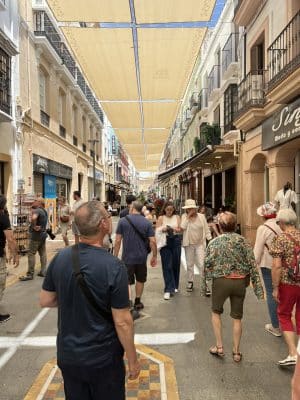
On the slope of the gorge carved into the landscape by the El Tajo of Guadalevin, you can still see the remains of the former city wall Murallas de Levante. Tireless adventurers can embark on a step-packed path into the El Tajo Gorge. From here there are fantastic views of the divided city. However, you should keep in mind that everyone has to scramble up the path again afterwards.
Day tourists prefer to enjoy a relaxed stroll through the alleys of Ronda with their pretty cafés, restaurants and shops. In addition, Ronda has several museums that are worth visiting: for example, the Museo Lara, filled with torture chambers and curiosities, or the Museo del Carruaje. The Museo Taurino de la Real Maestranza de Caballería is also very popular.
Best time to visit
The pleasant temperatures in Ronda are striking. About 2,700 hours of sunshine are recorded in the city every year. Nevertheless, it will only be 15 degrees Celsius on average. Only in July and September does it get up to 30 degrees Celsius here.
After one of the popular hikes in the surroundings of Ronda – for example to the Pueblos Blancos – it is a good idea to visit the modern hamam Aguas de Ronda near the excavation site of the former Arab baths.


